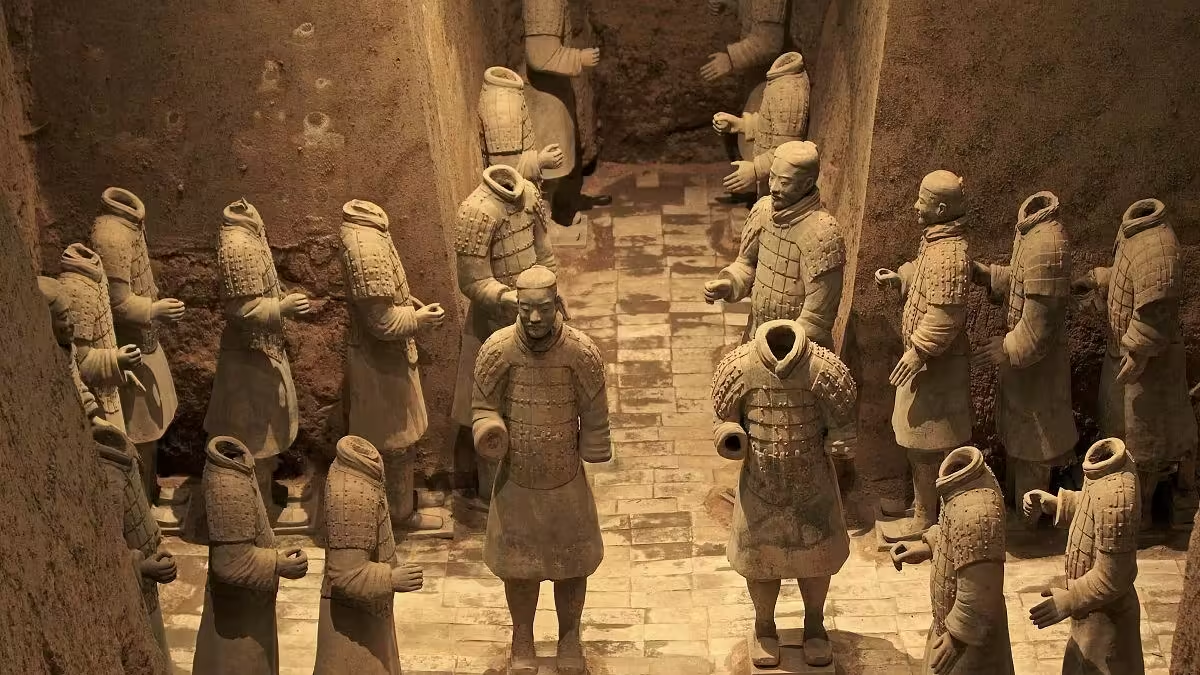Xi’an is a city where history surrounds you effortlessly, creating an atmosphere that feels both intimate and grand. Among the many historical treasures of Xi’an, none is more iconic or awe-inspiring than the Terracotta Army, often referred to as the “Eighth Wonder of the World.” This incredible archaeological discovery offers a glimpse into the past that is both majestic and deeply moving.
The Terracotta Army is part of the mausoleum of China’s first emperor, Qin Shi Huang, who ruled over 2,000 years ago. Located to the south of the majestic Lishan Mountain and near the winding Wei River, the site is surrounded by natural beauty, blending seamlessly with the mountainous landscape. The grand tomb of Qin Shi Huang, with its towering burial mound, lies hidden within this scenic setting, offering a stark contrast to the military might it represents.
No visit to Xi’an is complete without seeing the Terracotta Army. Buried for over two millennia, this vast underground army was discovered in 1974 by local farmers, revealing to the world a stunning testament to the power and ambition of Emperor Qin Shi Huang. Standing before the massive excavation pits, you can almost hear the echoes of ancient battles, as if you’ve been transported back to the time when the Qin army marched to unify China.
The sheer scale of the Terracotta Army is breathtaking. Spread across three main pits, the army occupies nearly 20,000 square meters, depicting the might of the Qin military in vivid detail. Each terracotta figure is life-sized, with the tallest reaching over six feet, making them the largest known clay statues in the world. The detail is equally astonishing. The army includes a variety of figures, from imposing generals to stalwart infantrymen, each with distinct facial expressions and features. No two soldiers are alike, with each one reflecting a unique character, whether it be determination, courage, or contemplation.
The artistry of the Terracotta Army is a testament to ancient Chinese craftsmanship. These figures were meticulously sculpted to represent the emperor’s formidable imperial guard, showcasing not only their military prowess but also the highly organized and disciplined nature of the Qin Dynasty’s army. The level of detail, from the soldiers’ armor to their hairstyles, is a remarkable achievement in the history of sculpture and has earned the Terracotta Army its place as a pinnacle of Chinese art.
The discovery of the Terracotta Army has given the world a priceless cultural heritage, offering a rare and tangible connection to China’s ancient history. The site stands as a proud symbol of China’s rich cultural legacy and continues to draw millions of visitors from around the globe, all eager to witness this extraordinary marvel. For Xi’an, the Terracotta Army is not just a historical artifact; it is a source of immense pride and a reminder of the enduring strength and creativity of the Chinese people.

